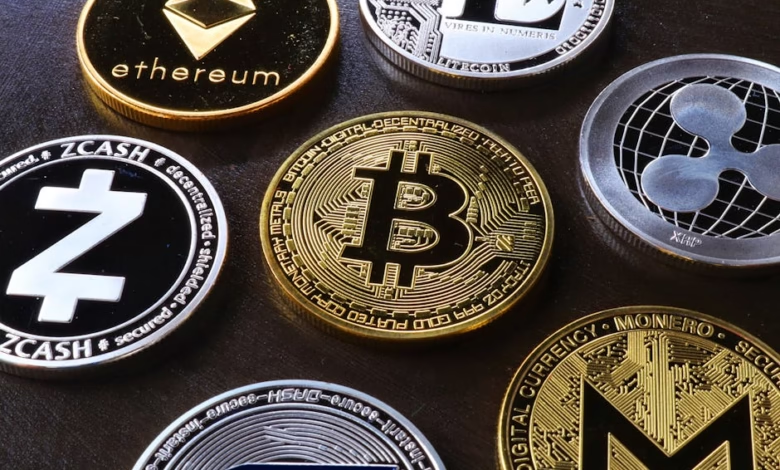The Comprehensive Guide to Gold Mining: Exploration, Market Trends, and Sustainable Practices

Gold mining is a multifaceted industry that plays a crucial role in the global economy, encompassing exploration, extraction, and production processes that yield this precious metal. As a safe haven asset and a hedge against inflation, gold continues to attract investors, influencing gold market trends and driving demand for gold investment options like gold ETFs, gold futures, and physical gold. This article will delve into the intricate processes behind gold mining, highlighting exploration and extraction techniques that shape the industry today.
Additionally, we will analyze the current gold market trends, focusing on pricing dynamics, investment opportunities, and the future outlook for gold reserves. With growing concerns about environmental sustainability, we will also explore sustainable gold mining practices that aim to balance production with environmental responsibility. From the allure of gold jewelry and collectibles to the impact of central banks' gold purchases, we will cover essential topics that underscore the importance of gold in modern finance and trade. Join us as we navigate the fascinating world of gold mining and uncover the intricate relationship between gold and global economic trends.
- 1. Understanding Gold Mining: Exploration and Extraction Techniques
- 2. The Gold Market Trends: Prices, Investment Opportunities, and Future Outlook
- 3. Sustainable Gold Mining Practices: Balancing Production with Environmental Responsibility
1. Understanding Gold Mining: Exploration and Extraction Techniques
Gold mining is a multifaceted process that encompasses exploration, extraction, and production. Understanding these stages is crucial for anyone interested in the gold market, whether they are seasoned investors or casual observers of gold prices.
The first phase, exploration, involves identifying areas rich in gold reserves. Geologists employ various techniques, including geological mapping, remote sensing, and geochemical sampling, to locate potential mining sites. Modern gold technology has enhanced these methods, allowing for more precise identification of promising areas, ultimately leading to more efficient gold production.
Once a viable site is established, the extraction process begins. There are several methods used in gold mining, including open-pit mining, underground mining, and alluvial mining. Open-pit mining is often favored for its cost-effectiveness and ability to extract large quantities of gold. In contrast, underground mining is employed when gold deposits are located deep beneath the earth's surface. Alluvial mining involves sifting through riverbeds and stream deposits, often attracting small-scale miners due to its lower startup costs.
The extraction of gold not only focuses on the physical gold but also emphasizes sustainability. Sustainable gold mining practices are becoming increasingly important as the global gold demand rises and environmental concerns grow. Techniques such as minimizing waste and reducing water usage are essential in maintaining ecological balance while meeting the needs of gold investors and collectors.
It's also important to note the role of gold in the larger economic context. Gold is often perceived as a safe haven asset, particularly during times of economic uncertainty or inflation. As central banks continue to hold significant gold reserves, the gold market trends can often indicate broader economic shifts. Investors often turn to gold ETFs, gold futures, and other investment vehicles like gold coins and gold bullion as a hedge against market volatility.
Moreover, gold recycling has gained traction, allowing for the recovery of gold from old electronics, jewelry, and other sources. This not only contributes to the supply of physical gold but also supports the notion of responsible consumption in the gold trade.
In summary, understanding the exploration and extraction techniques of gold mining is vital for comprehending the dynamics of the gold market. As global demand continues to evolve, so will the methods used to discover and produce this precious metal, reinforcing its status as a valuable investment option.
2. The Gold Market Trends: Prices, Investment Opportunities, and Future Outlook
The gold market has experienced significant fluctuations in recent years, driven by various economic factors, geopolitical tensions, and shifting investor sentiments. As a safe haven asset, gold tends to attract investment during times of uncertainty, prompting a surge in gold prices. Investors are increasingly turning to gold as a hedge against inflation, particularly in light of current economic conditions that have raised concerns about the stability of fiat currencies.
In recent months, gold prices have shown resilience, supported by strong global demand and constrained supply due to challenges in gold mining and production. Central banks have also been active in increasing their gold reserves, viewing gold as a strategic asset that can bolster national financial security. This trend indicates a bullish outlook for gold prices, as central banks continue to diversify their reserves away from traditional currencies.
Investment opportunities in the gold market are diverse. Gold ETFs (Exchange-Traded Funds) have gained popularity among investors seeking exposure to gold without the need for physical storage. Additionally, gold futures contracts offer a way to speculate on price movements, allowing traders to capitalize on market volatility. For those interested in tangible assets, investing in physical gold, such as gold bullion, gold bars, and gold coins, remains a favored option. Collectibles, including luxury gold jewelry and gold coins, also present unique investment opportunities for collectors and investors alike.
The gold recycling industry is witnessing growth, contributing to the sustainable gold mining movement by providing an alternative source of gold that reduces the need for new extraction. This aligns with the increasing global demand for ethically sourced gold and the push for sustainable practices within the gold trade.
Looking ahead, the future of the gold market appears promising, with ongoing discussions about the role of gold in a changing economic landscape. The integration of gold and cryptocurrency is also a developing trend, as some investors explore the potential benefits of diversifying their portfolios with both assets. As global economic dynamics continue to evolve, gold market analysis will remain critical for understanding price fluctuations and investment strategies.
In summary, the gold market trends indicate a robust environment for gold investment, driven by heightened demand, strategic central bank purchases, and innovative investment vehicles. With gold's historical role as a store of value and a hedge against inflation, it remains an essential asset for investors navigating the complexities of today’s economic climate.
References:
– World Gold Council. (2023). Gold Demand Trends Q2 2023. Retrieved from [https://www.gold.org](https://www.gold.org)
– Kitco News. (2023). Gold Prices and Market Analysis. Retrieved from [https://www.kitco.com](https://www.kitco.com)
– International Monetary Fund. (2023). Central Bank Gold Purchases. Retrieved from [https://www.imf.org](https://www.imf.org)
– CNBC. (2023). Investing in Gold: Trends and Opportunities. Retrieved from [https://www.cnbc.com](https://www.cnbc.com)
3. Sustainable Gold Mining Practices: Balancing Production with Environmental Responsibility
Sustainable gold mining practices are increasingly essential in a world that prioritizes environmental responsibility alongside economic growth. As global gold demand continues to rise, the challenge of balancing gold production with ecological preservation has become more pressing. Sustainable gold mining focuses on minimizing environmental impacts while ensuring the longevity of gold reserves.
One key aspect of sustainable gold mining is the adoption of advanced gold technology, which enables more efficient extraction processes. These innovations can reduce waste and energy consumption, ultimately lowering the carbon footprint associated with gold mining operations. For example, utilizing eco-friendly methods in gold refining reduces harmful emissions and minimizes water use, addressing concerns about water pollution and resource depletion.
Another critical practice is gold recycling, which involves reclaiming gold from old jewelry, electronics, and other products. This not only reduces the need for new gold extraction but also helps stabilize gold prices by increasing the supply of recycled gold in the market. As a result, gold recycling contributes to a more sustainable gold trade, offering a viable alternative to traditional mining.
Moreover, the challenge of gold smuggling and illegal mining poses significant threats to sustainable practices. To combat these issues, the industry must adopt stringent regulations and transparency measures that ensure ethical sourcing of gold. By implementing responsible mining standards, stakeholders can help mitigate the negative impact of the gold market on local communities and ecosystems.
Investors are also becoming more conscious of sustainability when considering gold investment options. Gold ETFs and gold futures that prioritize ethical sourcing and sustainable practices are gaining popularity among socially responsible investors. As gold coins and bullion continue to be viewed as safe haven assets during economic uncertainty, the emphasis on sustainable gold production will likely influence market trends.
In conclusion, the future of gold mining lies in balancing production with environmental responsibility. By embracing sustainable gold mining practices, the industry can address global gold demand while protecting ecosystems and communities. This approach not only enhances the reputation of gold as a luxury asset but also secures its role in the ever-evolving landscape of investments, including gold and cryptocurrency. As we move forward, the integration of sustainability into gold mining will be crucial for maintaining the integrity of this valuable resource.
In conclusion, gold mining remains a vital sector that encompasses exploration, extraction, and production, all while adapting to the evolving dynamics of the global gold market. As we have explored, understanding gold mining techniques is crucial for maximizing efficiency and ensuring the sustainability of gold production. The current gold market trends indicate a promising future for gold investment, with central banks accumulating gold reserves and investors turning to gold ETFs and gold futures as safe haven assets amid economic uncertainty and inflation concerns.
Moreover, the importance of sustainable gold mining practices cannot be overstated. Balancing production with environmental responsibility is essential to safeguard natural resources and promote ethical gold trade. This commitment not only enhances the reputation of the gold mining industry but also appeals to a growing demographic of consumers interested in luxury gold and sustainable products, such as gold jewelry and collectibles.
As we navigate the complexities of the gold market, it is clear that gold continues to be a highly sought-after commodity, offering various investment opportunities—from physical gold, including gold bars and coins, to innovative technologies in gold recycling and refining. By staying informed about gold market analysis and trends, investors can make educated decisions that align with their financial goals and values. Ultimately, whether through gold bullion, coins investing, or engaging in the broader conversation about gold and cryptocurrency, the allure of gold endures as a timeless asset in an ever-changing economic landscape.





